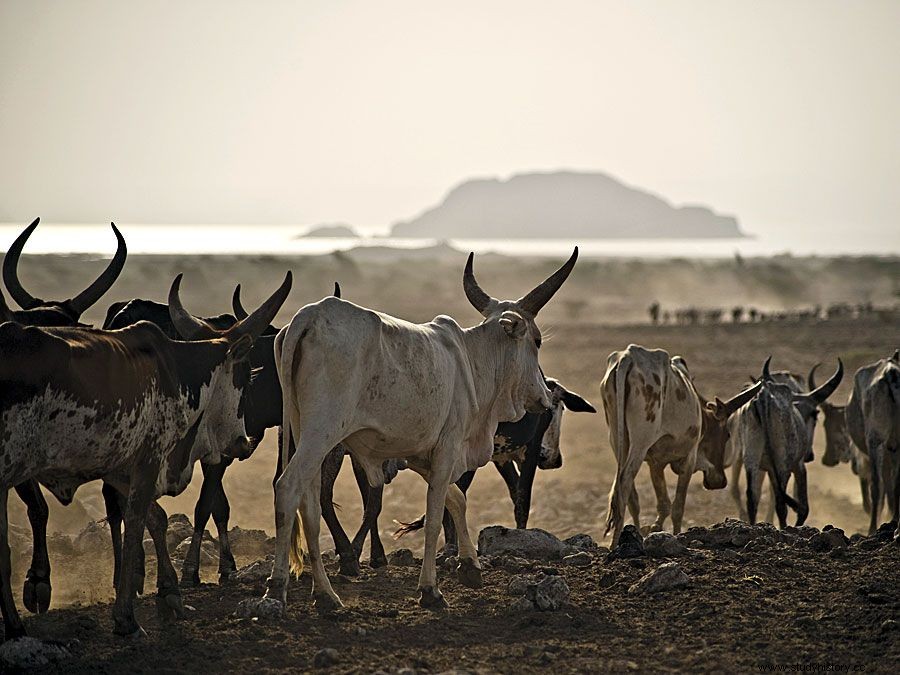Nariocotoma , north location Kenya, known for the discovery of an almost complete African skeleton in 1984 Homo erectus (also called H. ergaster ) from about 1.5 million years ago.
 Britannica Quiz Destination Africa:Fact or Fiction? Is Africa's northernmost point further north than Europe's southernmost point? See if your geographical knowledge points north or south on this journey through Africa.
Britannica Quiz Destination Africa:Fact or Fiction? Is Africa's northernmost point further north than Europe's southernmost point? See if your geographical knowledge points north or south on this journey through Africa. The skeleton known to paleoanthropologists as KNM-WT 15000 is also referred to as " Turkana Boy . " It is exceptional in its completeness; just one humerus and the ends of the hands and feet are missing. Maturity of teeth and limbs is that of an 11-13 year old. The juvenile was already tall (160 cm) at this young age and may have grown to 180 cm and 68 kg by adulthood. Unlike earlier hominins (members of the human lineage) like Australopithecus the hips were narrow and the thighs long like those of modern humans. The brain was larger than the previous one H. habilis and smaller than the later Homo species (e.g. H. neanderthalensis and H. sapiens) ). Due to his large body mass, however, his relative brain size did not exceed that of his putative ancestor H. habilis expanded .
In context the show human evolution the nariocotoma youth and other African H. erectus / H. ergaster- Instances a descent pattern with modification. You are proof that the basic Size and shape des human body 1.5 million years ago and probably as early as 1.9 million years ago. Brain size had increased slightly at this point, but was still significantly smaller than H. sapiens . Unlike previous hominin species, but like H. sapiens , had H. erectus / H. gaster anatomical details that adapted it for endurance running.
